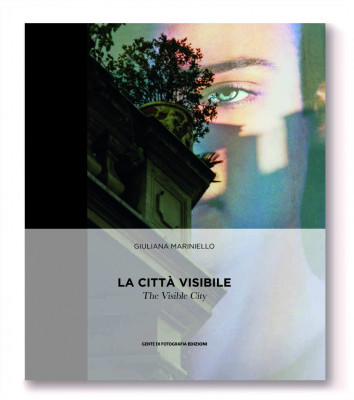Giuliana Mariniello: LA CITTÀ VISIBILE (The Visible City)

Author: Giuliana Mariniello
Texts: Massimo Mussini, Charles-Henri-Favrod, Mario Cresci, Giuliana Mariniello
Pages: 100
Languages: Italian/English
Year: 2023
Format: 250x300 mm
Binding: Paperback
ISBN 978-88-94-7614-0-5
€ 30,00
The city that Giuliana Mariniello chooses to depict, in fact, is the one that the eyes perceive: characterized by scaffolding covered with tarpaulins decorated with advertising images or by reproductions of the hidden architectural structure; it is the space punctuated by billboards placed against the background of the buildings; it is public vehicles disguised with decals. Her photographic transcription of this environment, which we almost always perceive unconsciously and without committing ourselves to look in order to understand, is reinterpreted through a selective framing and with the judicious use of the Matisse tradition of à plat, so as to radically transform the proxemic relationships between the things represented and to arouse new meanings, frequently full of irony.
If, on a purely figurative level the photographs find their model in the surrealist vein, it is not a mere formal resemblance, as happens in many contemporary images. Beyond the form, they also include surrealist thought, the subtle and evocative thinking that Rosalind Krauss intuited in some of Brassaï’s images and that I also can see in many photographs by Cartier-Bresson. In short, to belong to the surrealist sphere, it is not enough to imitate a certain formal style but it is necessary to have the ability to grasp a situation that goes beyond the common occurrence. To understand this: the leap of the man who tries to jump the puddle in a famous photograph by Cartier-Bresson is "surrealist", while the figurative form falls within the full realist sphere. Even René Magritte, with his juxtaposition of realistic images in alienating contexts, can help to understand the language of Giuliana who, in fact, never deforms reality, but shows it as the eyes transmit it to us and even when the forms appear contorted “a la Dalì”, is not due to a reworking with Photoshop but due to the wavy specularity of the reflecting surface. The research project revolves around the concept of "irony" or "mot of wit" which, as Sigmund Freud highlighted, almost always arises from unconscious impulses and Giuliana Mariniello's photographs also derive from them, since the ability to isolate the singular relationship that is established between a billboard advertising jeans and three figures painted on a sheet that covers the facade of a building located further away from the set of visual information is a symptom of a particular ability to relate things typical of the twentieth-century surrealist tradition, heir and ideal continuer of the Baroque “Concettismo”.
(from the introduction by Massimo Mussini)
